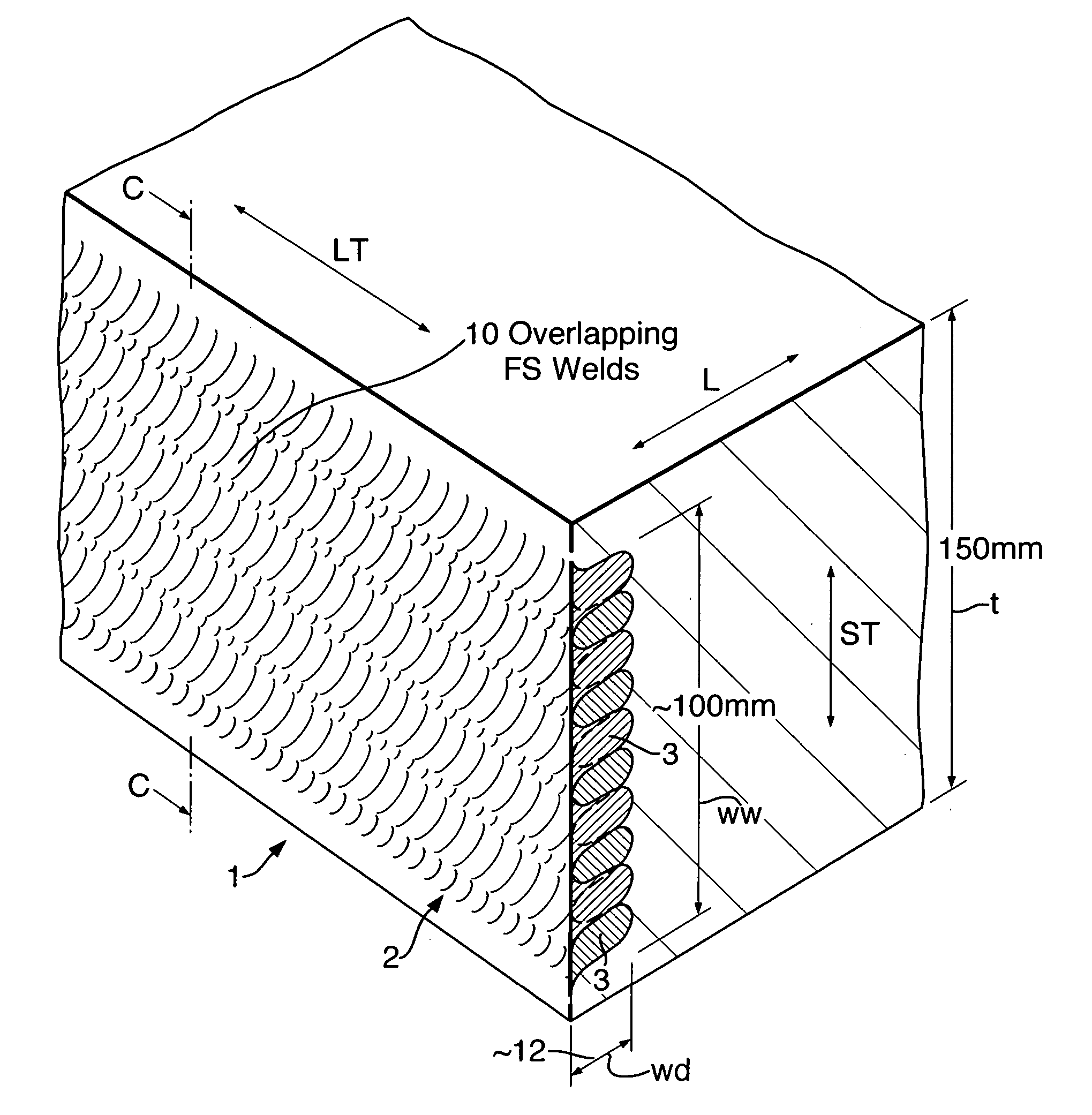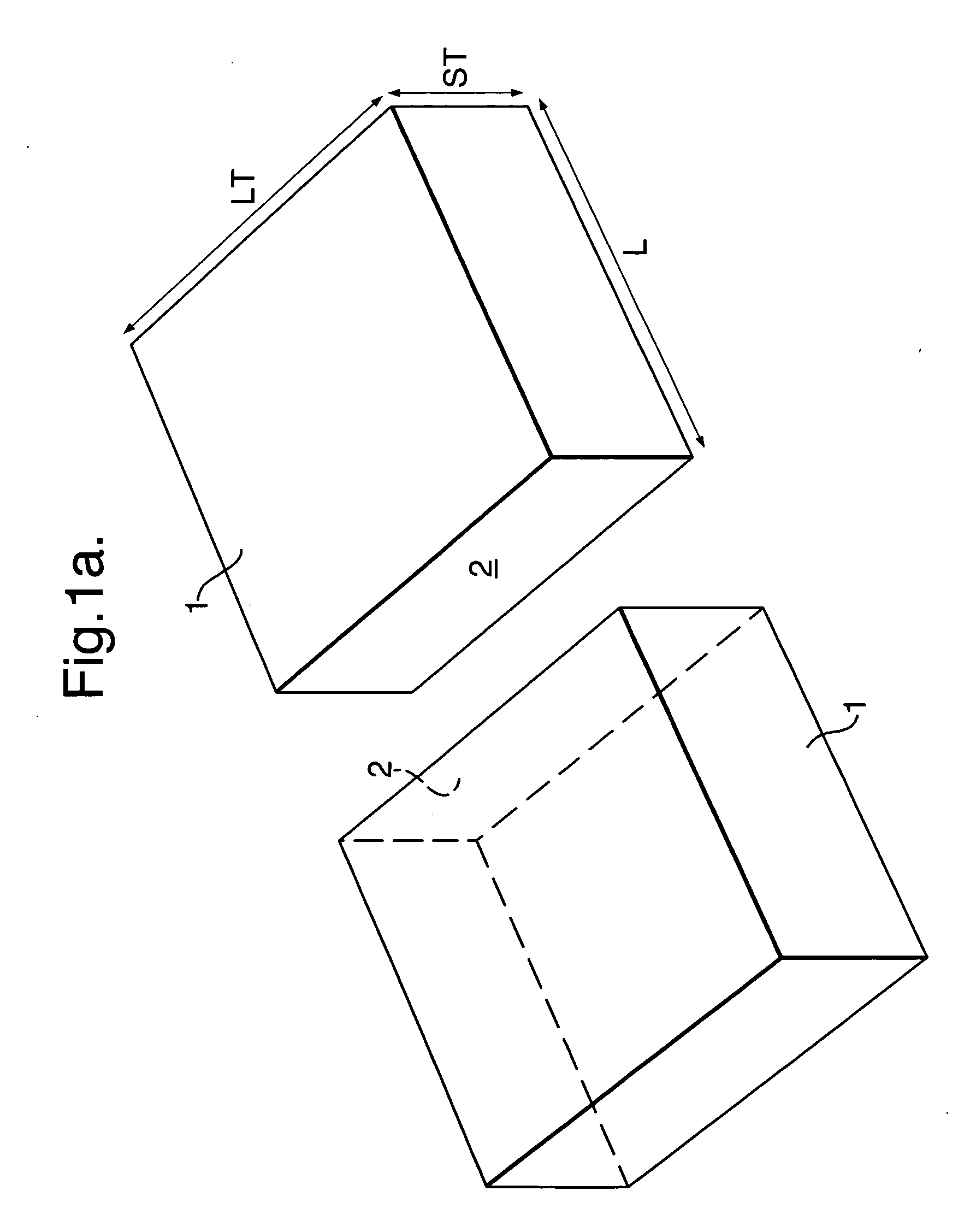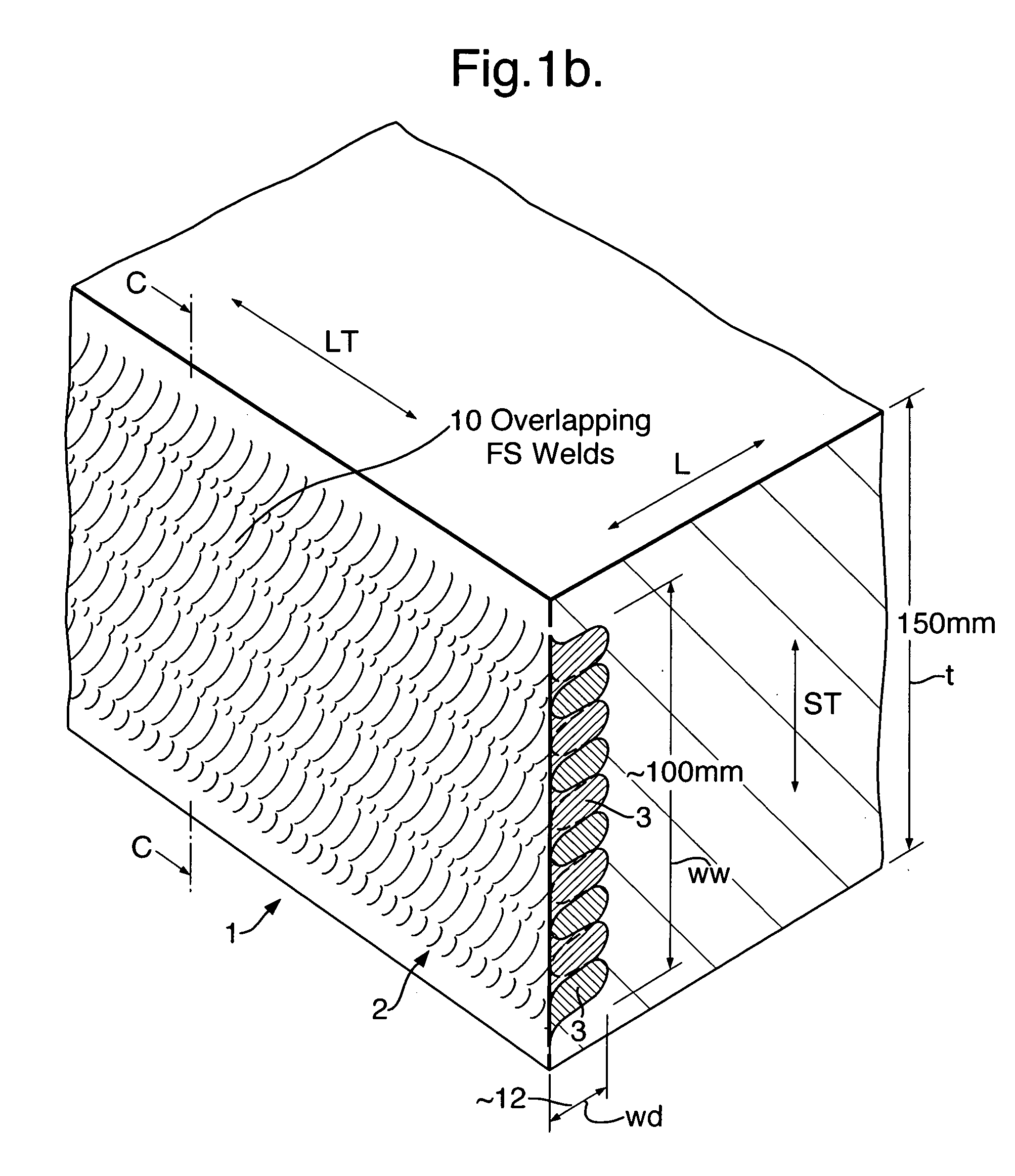Welding method
- Summary
- Abstract
- Description
- Claims
- Application Information
AI Technical Summary
Benefits of technology
Problems solved by technology
Method used
Image
Examples
Embodiment Construction
[0052] The first embodiment of the invention relates to an experiment in which two rolled plates were welded together. The rolled plates 1 before being joined are illustrated schematically in FIG. 1a. The plates were made by rolling in the longitudinal direction of the plates (represented by arrow L in the drawings). The direction of the width of the plate is represented by arrow LT (i.e. the Long Transverse direction). The direction of the thickness of the plate is represented by arrow ST (i.e. the Short Transverse direction). The rolled plates 1 have a thickness t (in direction ST) of 150 mm. The plate was made from a 7000 series aluminium alloy in T7651 temper condition. The alloy used comprises Aluminium, Zinc, Copper and Magnesium. The alloy had a relative high content of zinc (>6 wt. %). This alloy was chosen because of the known difficulties associated with fusion welding the alloy.
[0053] The microstructure of the respective sides 2 of the plates 1 to be joined was modified ...
PUM
| Property | Measurement | Unit |
|---|---|---|
| Fraction | aaaaa | aaaaa |
| Depth | aaaaa | aaaaa |
| Depth | aaaaa | aaaaa |
Abstract
Description
Claims
Application Information
 Login to View More
Login to View More - R&D
- Intellectual Property
- Life Sciences
- Materials
- Tech Scout
- Unparalleled Data Quality
- Higher Quality Content
- 60% Fewer Hallucinations
Browse by: Latest US Patents, China's latest patents, Technical Efficacy Thesaurus, Application Domain, Technology Topic, Popular Technical Reports.
© 2025 PatSnap. All rights reserved.Legal|Privacy policy|Modern Slavery Act Transparency Statement|Sitemap|About US| Contact US: help@patsnap.com



